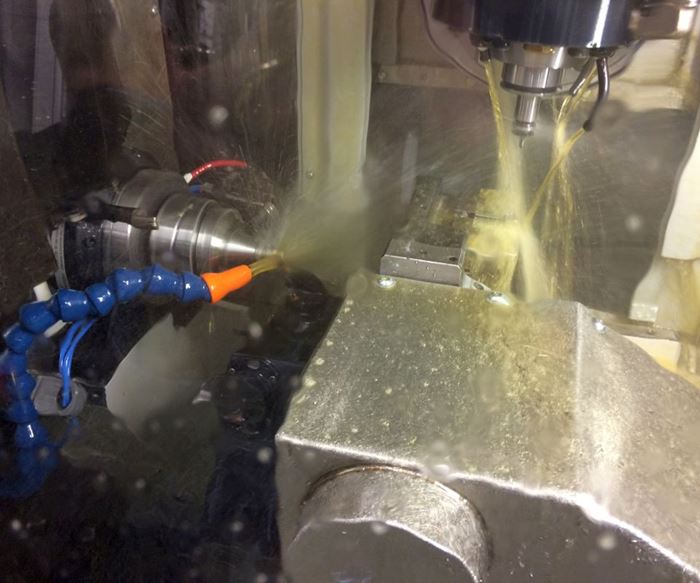Turret Added to Five-Axis Bar-Fed Milling Machine
This bar-fed mill features a nine-station turret in addition to a five-axis milling spindle. That way, turning can be performed on the bar while the milling spindle performs backworking on a parted-off workpiece.
Share




Bar-fed milling machines such as the five-axis models manufactured by Willemin-Macodel offer a number of advantages. These mills use a bar feeder in much the same way as a lathe. The bar feeder pushes barstock into the machining zone to allow the milling spindle to access five sides of the part. Then, the part can be gripped by a pivoting clamp and parted off the barstock to enable backworking operations to be performed on the final side. A chute receives completed parts from the backworking clamp.
Because components are produced from barstock, typical workpiece fixturing and setup hassles are reduced. This is particularly important when dealing with the complex geometries of medical components. Plus, the bar feeder enables long stretches of unattended operation when high production is needed.
At the recent Precision Machining Technology Show (PMTS) last month in Columbus, Ohio, I learned that Willemin-Macodel has developed an alternate model, the 408MTT, that features a nine-position turning turret in addition to a five-axis milling spindle. That way, the turret can perform turning operations at the same time the milling spindle performs backworking operations on a parted-off workpiece, essentially scoring some “free” machining time by overlapping operations.
This machine is well-suited for parts such as the polyaxial pedicle screw head shown in the second photo above, which the company offered as takeaways for PMTS attendees. The cycle time to produce this part from 303 stainless steel is five minutes, and a total of 16 tools are used.
The 408MTT machine can accommodate barstock as large as 1.42 inches and features an HSK-E40 taper, 30,000-rpm or 42,000-rpm five-axis milling spindle, and a 48-station tool magazine.
Related Content
-
Shoulder Milling Cuts Racing Part's Cycle Time By Over 50%
Pairing a shoulder mill with a five-axis machine has cut costs and cycle times for one of TTI Machine’s parts, enabling it to support a niche racing community.
-
Inverting Turning and Five-Axis Milling at Famar
Automation is only the tip of the iceberg for Famar, which also provides multitasking options for its vertical lathes and horizontal five-axis machine tools.
-
Lean Approach to Automated Machine Tending Delivers Quicker Paths to Success
Almost any shop can automate at least some of its production, even in low-volume, high-mix applications. The key to getting started is finding the simplest solutions that fit your requirements. It helps to work with an automation partner that understands your needs.



























